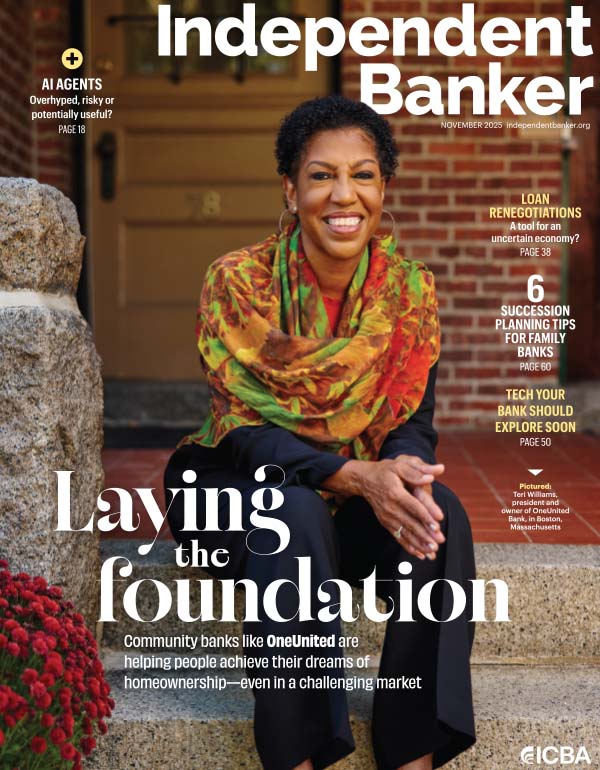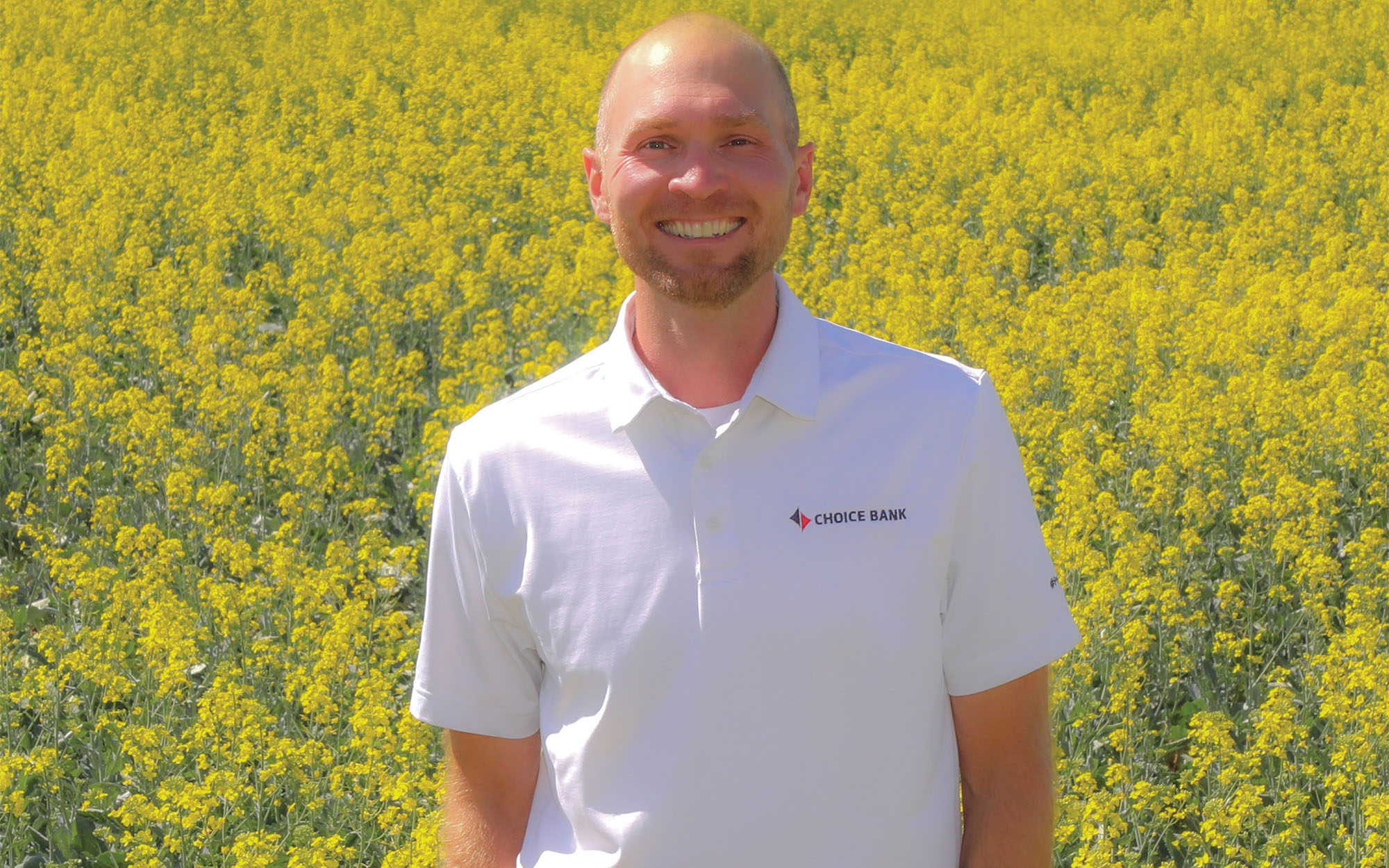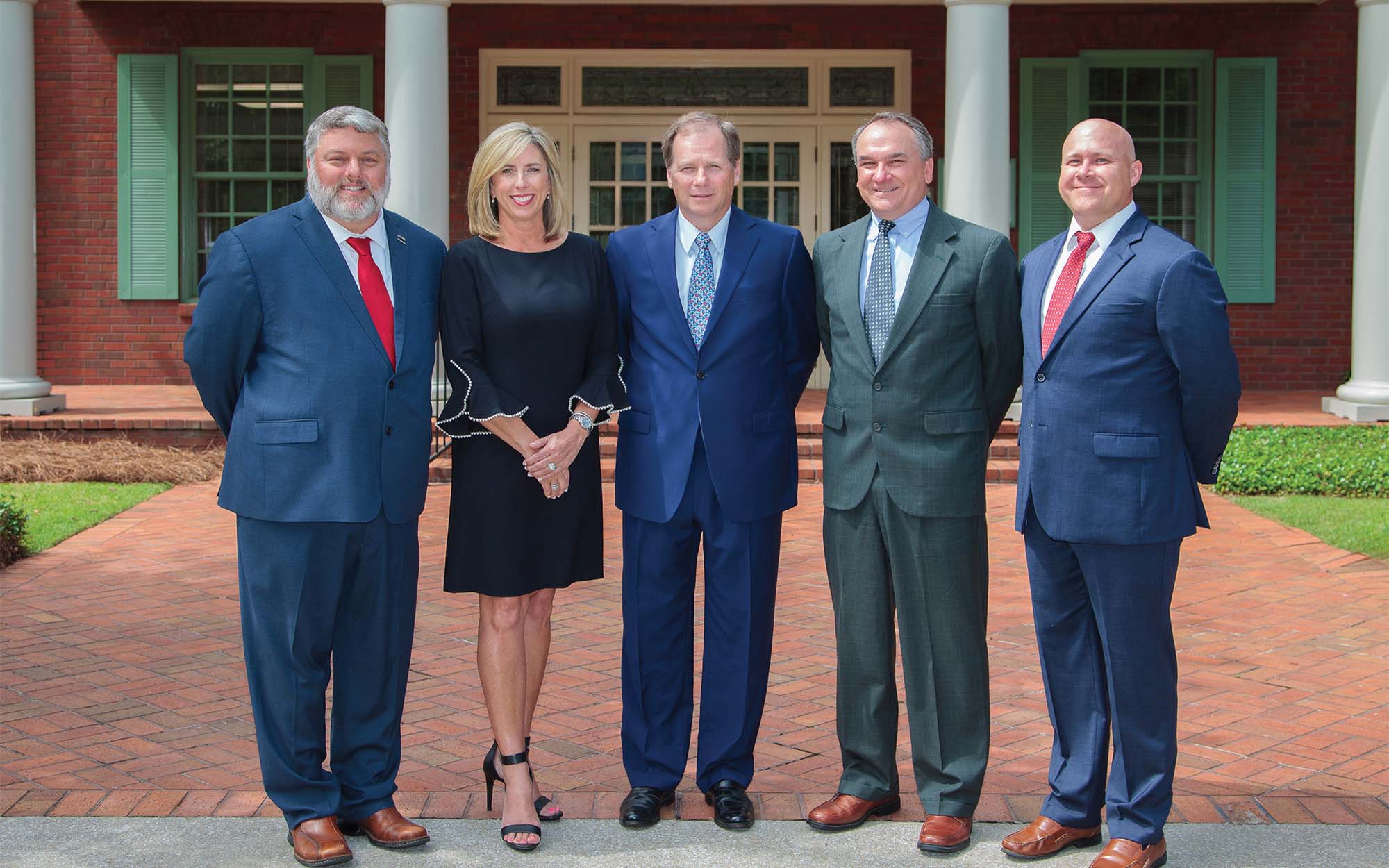Our CFO panelists
Ryan Anderson
CFO at $700 million-asset The Fountain Trust Company in Covington, Ind.
Michelle D’Aniello
CFO at $445 million-asset Dean Bank in Franklin, Mass.
Cameron Ohlendorf
Finance officer at $185 million-asset First Community Bank and Trust in Beecher, Ill.
Q: With community banks now fully adopting a forward-looking loan loss methodology under the new CECL standard, what have you learned about credit risk within your bank?
Michelle D’Aniello: I feel like we have always had a forward-looking point of view as far as loan losses go—what’s coming up down the road and what will impact our borrowers’ ability to repay loans. We have always considered what’s coming. It feels like there were a bunch of hoops [community banks] had to jump through to get to the same place that [most of us] have always been. The big banks that had an earlier implementation deadline spent a lot of money in the early days of CECL trying to come up with their methodology and how they would capture everything. I’m glad we didn’t have to do this, because the best practices seemed to shift to a much simpler concept.
Did You Know?
55%
of banks think inflation is likely to persist but that they can manage its challenges.
Source: CSBS
Ryan Anderson: We didn’t learn a whole lot of new things about our portfolio. CECL has reinforced that we’re comfortable with our underwriting standards and the risk we have in our loan and bond portfolios. The methodology hasn’t changed how we view different credits, but CECL has made us take a deeper look at the securities portfolio than we did before. We felt very comfortable with the way we have been analyzing the bonds we purchase and with the credit risks in our securities portfolio. CECL has reaffirmed our credit position and credit risk.
“My guess is that five years from now, we’ll be including something we haven’t even contemplated yet into our everyday CECL process.”—Cameron Ohlendorf, First Community Bank and Trust
Cameron Ohlendorf: We have been preparing for CECL for a long time and have adjusted our methodology dozens of times over the years. This is now first contact. It’s live data and live results. We’re going to watch and learn to see how our methodology holds up to a real world that is very different from the flat rates and benign credit environment we were testing in. While we have a system we believe will work well for us, we are also still on the lookout for other types of data we can include to further improve our model. My guess is that five years from now, we’ll be including something we haven’t even contemplated yet into our everyday CECL process.
Q: How have current economic conditions changed the way you think about your provision for credit losses under CECL?
Anderson: To be honest, these conditions haven’t really changed the way we look at credit losses under CECL. We have always operated under the ALLL (Allowance for Loan and Lease Losses) or CECL model, using a conservative approach. We have always taken into account low-probability scenarios that would have a detrimentally high impact on the bank. The current conditions aren’t great for banks, but we have taken steps to fortify our balance sheet so we’re still positioned to do well even in these odd economic times.
Ohlendorf: We have a standing meeting where we talk about what the loan portfolio looks like from a loan loss perspective, how our customers are feeling and how we are working through troubled loans. We have always done this, but now we’re doing it as part of CECL. It’s part of the conversation as we look at our Q factors and forward-looking projections.
D’Aniello: I think it comes down to the fact that short-term interest rates are rising due to inflation, and this is affecting our customers and their ability repay loans, because their normal day-to-day expenses are higher. So, we might increase our qualitative factor a little bit, because we know their margins are being squeezed just like ours are.
Q: How do you think about the financial statements differently from last year considering changing duration and credit risks in your portfolio?
Anderson: We have wanted to shorten the duration in our portfolio as interest rates have risen, but the rise in interest rates hasn’t affected how we feel about credit risk. We feel like we did proper due diligence at the time when we made loans or bought bonds, so rising rates haven’t affected how we feel about the credits in our portfolio.
Q: What challenges have you faced in managing finance operations in the face of the rapidly rising cost of funds with depressed asset prices?
Ohlendorf: We kept a lot of liquidity dry and some powder available. We didn’t go out and buy a bunch of bonds but grew at a good pace, because we knew that one of these days, rates were going to turn and the bond portfolio was going to be a little upside down—we just didn’t know to what degree. We didn’t want to bet the whole bank on knowing where rates were, since we knew they wouldn’t stay there forever.
D’Aniello: The depressed asset values haven’t affected us much, because we have sufficient collateral that’s secured by mortgages at the FHLB (Federal Home Loan Banks). We haven’t crossed the point where our borrowings are affected by our tangible net equity. The new borrowing facility made available by the Fed has been very helpful. It’s a really appealing way to borrow funds, because the rate is fixed for a year, and it can be paid off at any time without penalty.
Anderson: We have been in this low-rate environment for almost a year and a half now, but it still feels disjointed. It doesn’t feel like we’ve gotten used to it yet. So, it’s important to keep the communication lines open with senior management, ownership and the board. We’ve had a lot more communication about our liquidity position and different projections that we didn’t have to do in a low-rate environment.
Q: How has your role in the bank changed as management addresses interest rate risk mitigation?
Anderson: I don’t think it really has changed much. The entire management team is concerned about this, but it’s my job as the CFO to oversee rate risk mitigation and look at the balance sheet on a daily basis. That has always been part of the gig.
D’Aniello: My role in interest rate risk mitigation is more highlighted now. It has always been an important focus, but it is more difficult in the current environment.
Q: Has your bank changed the way you market deposit products to customers?
Did You Know?
3.1%
The projected global growth percentage in 2024—up from a projected 2.9% in 2023.
Source: January 2023 World Economic Outlook Update
Ohlendorf: No, we haven’t. We’re a 107-year-old community bank with a very strong core deposit franchise. There hasn’t been a lot of pressure in our market area to have the “CD blue light special,” so we haven’t felt the need to change anything.
D’Aniello: We don’t expect to be attracting deposits right now. We’re just trying not to lose the deposits we have, because it’s costly to attract deposits at this point. We do have specials available on our website, but we don’t market them to the public. We aren’t willing to pay such a high rate now to attract deposits—it’s just too expensive.
Anderson: We are marketing our deposit accounts more frequently now, though we haven’t changed our marketing channels. Our marquees feature deposit products, not loan products. We still have tremendous loan demand, so we need to fund loans with the deposits that are on our balance sheet. Sure, deposits are expensive, and our cost of funds is going up every month, but I’d rather fund loans from core deposits than borrowing from the FHLB.
“Our special deals right now are short-term, because we’re thinking and hoping that interest rates are going to go down.”—Michelle D’Aniello, Dean Bank
Q: Have you taken steps to increase the duration of deposits in the current rate environment?
Ohlendorf: Consumers always think rates are going to go up, so they stay short. The CD side of our bank has shrunk for years and will probably continue to shrink as people stay in money market funds and savings accounts.
D’Aniello: Our customers just don’t have an appetite for long durations. They believe that if they’re going to lock up their money for longer, they should be paid a higher interest rate. Yes, that’s how it normally works, but with the yield curve inversion, a five-year rate is now lower than a two-year rate. Our special deals right now are short-term, because we’re thinking and hoping that interest rates are going to go down.
“Even though economic conditions have changed, my role as a bank CFO hasn’t necessarily changed. The levers and the mechanisms we’re working with now are just different.”—Ryan Anderson, The Fountain Trust Company
Q: What are the main things that you’re focusing on now as a community bank CFO?
Anderson: The main thing I’m focused on right now is making sure the balance sheet is sound. We still have strong loan demand, so we need to continue to grow deposits to fund loan growth. And I’m trying to mitigate the rise in the cost of funds as much as possible and keep everything in balance. Even though economic conditions have changed, my role as a bank CFO hasn’t necessarily changed. The levers and the mechanisms we’re working with now are just different.
Ohlendorf: I’m new to the CFO role after having been a commercial lender for a number of years, so I’m diving deep. I definitely picked an interesting time to step into the finance side of the bank!
D’Aniello: I’m focused on maintaining deposits and trying to boost efficiency. Like many CFOs, I’m getting more involved in more areas of the bank. But since we’re a small community bank, I have always been involved in other areas of the bank, unlike CFOs at a large bank with higher headcounts.
CECL: Now in effect for community banks
In January, the Current Expected Credit Loss (CECL) standard became effective for community banks. This standard requires community banks to calculate reserves based on future losses instead of losses incurred in the past.
CECL was adopted in the wake of the 2008–2009 financial crisis. It requires lending institutions to capture, analyze and store more data to assess potential losses when putting assets on the books. This contrasts with setting aside reserves only when losses appear probable. Banks must create a lifetime expected loss estimate model that factors in current conditions, historical experience and supportable and reasonable forecasts.
Cameron Ohlendorf, finance officer at First Community Bank and Trust in Beecher, Ill., says his biggest takeaway from CECL so far is the need to be flexible. “It will take years for the industry to fully understand how CECL behaves in a variety of market conditions, so banks need to continue learning from their data and be open to new sources of forecasting,” he says.
When it comes to managing credit risk under CECL, Ohlendorf says his bank “is managing the portfolio how we always have but using third-party data to possibly identify cracks in the foundation.”
What’s the impact of the yield curve inversion?
In March, the yield curve reached its deepest inversion since 1981, which many economists consider to be a recession signal. How is this affecting the outlook of community bank CFOs?
“I don’t know if this is impacting customers, but it’s impacting the bank,” says Michelle D’Aniello, CFO at Dean Bank in Franklin, Mass. “It’s just bad news overall for banks. Our funding is more expensive.” She also notes that lending rates, unless they're tied to the prime rate, aren't high enough to cover the increase in funding costs.
D’Aniello points out that interest rates are high enough that it’s not appealing for customers to refinance, but they aren’t proportionally as high as the bank’s funding costs. “It’s going to be a difficult year until we see some steepening of the yield curve, especially with inflation,” she says. “Our net interest margin is being compressed.” According to D'Aniello, Dean Bank's net income is also experiencing pressure due to inflation.
“For customers who have a variable rate or a balloon that’s coming due, it looks different today than it did five years ago,” says Cameron Ohlendorf, finance officer at First Community Bank and Trust in Beecher, Ill. “We’re stress testing these scenarios to see what it looks like for each customer and having conversations with borrowers to make sure everyone understands where rates are now.
“The good news is that many customers who were on variable rates have been moving to fixed rates over the past year and a half or so,” Ohlendorf adds.






